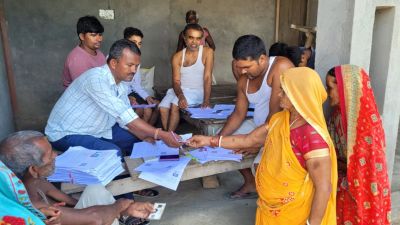Amid monsoon, cases of malaria, chikungunya on rise in Mumbai; BMC advises caution
While hospitalisations remain under control and mortality rates are low, BMC officials have advised vigilance due to the severe joint pain associated with chikungunya and the overall impact of malaria on daily life.
 Between August 1 and 14 this year, vector control work inspected 27,600 breeding sources, detecting 1,954 Anopheles and 9,890 Aedes mosquito breeding sites. (File Photo)
Between August 1 and 14 this year, vector control work inspected 27,600 breeding sources, detecting 1,954 Anopheles and 9,890 Aedes mosquito breeding sites. (File Photo)Mumbai has witnessed a significant increase in monsoon-related vector-borne diseases this year, with malaria and chikungunya cases rising sharply, according to the Brihanmumbai Municipal Corporation’s (BMC) recent reports. The early onset of rains in May this year has contributed to favourable mosquito breeding conditions, driving the surge.
The data indicates that between January and August 14, 2025, Mumbai recorded 4,825 malaria cases, up 20 per cent from 4,021 cases during the same period in 2024. Chikungunya cases increased by over 56 per cent, reaching 328 compared to 210 last year. Dengue cases, however, showed a decline from 1,979 to 1,564.
Leptospirosis cases dropped significantly from 553 to 316, and gastroenteritis cases fell to 5,510 from 6,133. Hepatitis rose slightly to 703 from 662, while Covid-19 cases reduced to 1,109 from 1,775, the data shows.
Listing the symptoms of each disease, Dr Rituja Ugalmugle, consultant (internal medicine) at Wockhardt Hospitals said malaria causes chills and body ache, while chikungunya brings joint pain lasting weeks. “If you have a fever for over 24 hours with severe symptoms, get tested immediately at a hospital,” she added.
“Avoid anti-inflammatory drugs until your blood tests are clear. Use paracetamol and complete your treatment. Remove stagnant water, use mosquito nets and repellents, and wear protective clothing. Early testing and personal precautions are key to controlling the spread,” Dr Ugalmugle advised.
BMC’s July 2025 report showed a similar rise in cases. Malaria cases nearly doubled to 4,151 compared to 2,852 in July 2024. Dengue infections increased moderately to 1,160 from 966. Remarkably, chikungunya surged more than five fold, with 265 cases against just 46 the previous year. Hepatitis cases rose to 613 from 493, while leptospirosis and gastroenteritis showed slight declines to 244 and 5,182, respectively. Covid-19 cases decreased to 1,094 from 1,646.
Between August 1 and 14 this year, the BMC intensified its public health measures. Surveys covered 4,78,283 houses and over 2.2 million residents. Contact tracing involved collecting 79,375 blood slides. Vector control work inspected 27,600 breeding sources, detecting 1,954 Anopheles and 9,890 Aedes mosquito breeding sites. As many as 30,655 discarded articles and tires were removed and fogging was conducted in 22,599 buildings and 341,275 huts.
Extensive sensitisation efforts reached 1,015 housing societies and 1,321 private practitioners to improve reporting, diagnosis, and treatment. Additionally, 32 health camps and 2,816 workplace interventions were organised. The municipal body relaunched its ‘Aapli Chikitsa Yojana,’ providing accessible, affordable diagnostic tests to residents.
“BMC’s surveillance and fogging are essential but insufficient without citizen participation. Source reduction at the home and society level is critical since a single water collection point can seed an outbreak,” Dr Ugalmugle said.
The BMC advises citizens to eliminate stagnant water around their homes, avoid clutter where water accumulates, and use mosquito nets or repellents, especially while sleeping during the day and night. Residents are also urged to drink boiled water, avoid street food to prevent gastroenteritis and hepatitis, and seek prompt medical attention if fever develops, avoiding self-medication.
While hospitalisations remain under control and mortality rates, including among pregnant women, are reportedly low, officials emphasise vigilance due to the severe joint pain associated with chikungunya and the overall impact of malaria on daily life.







